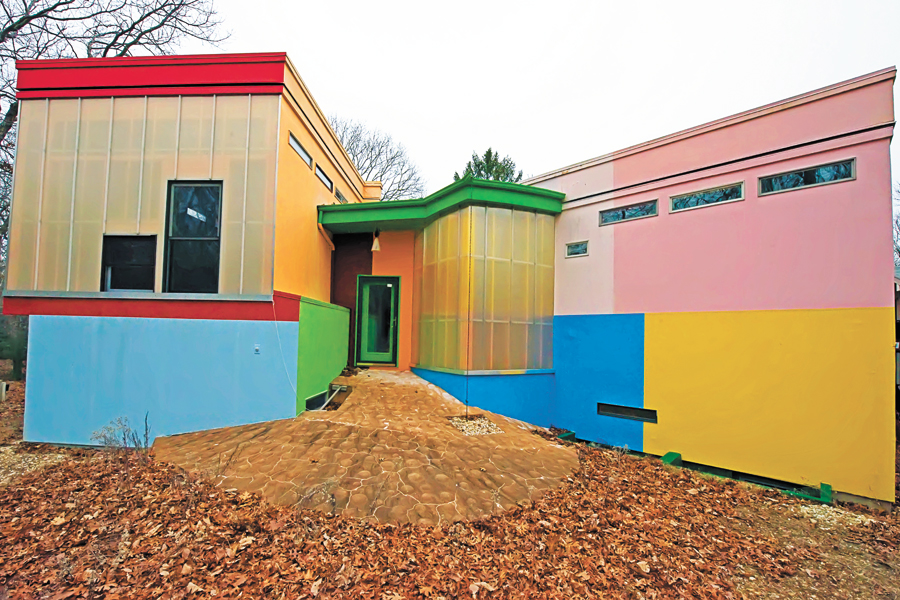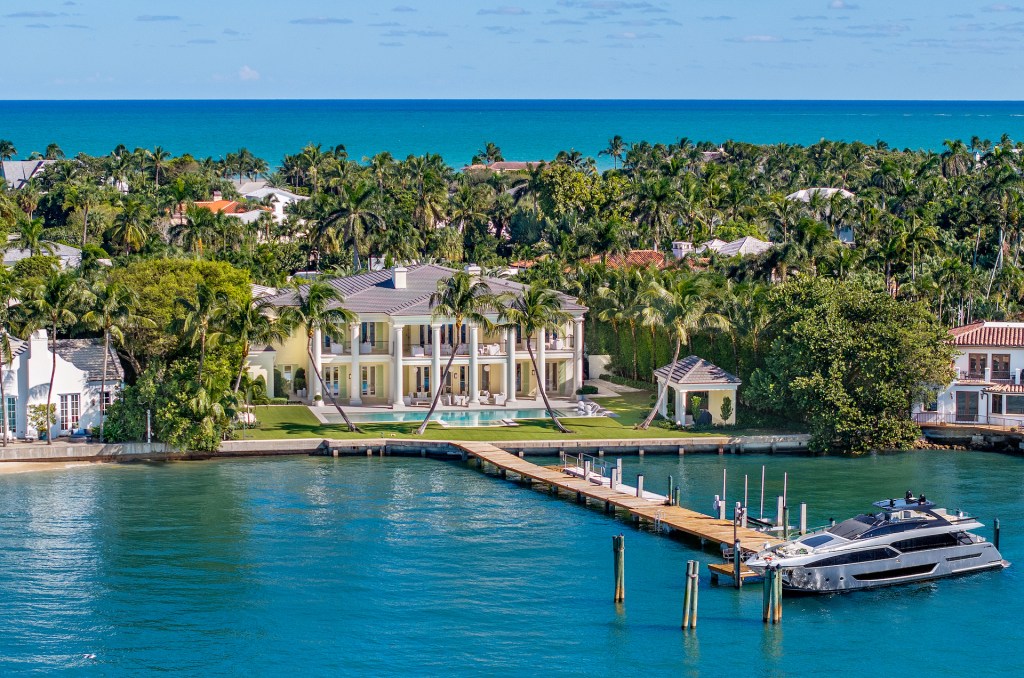Reversible Destiny House in East Hampton Promises Eternal Life — and Fails to Deliver

Within the last 10 years, two architectural designers who are married have built dwellings that are meant to be so uncomfortable and tipsy inside that they result in the immortality of their occupants. In these residences, they are constantly trying to keep their balance, exercise their muscles and sharpen their reflexes to such an extent that they will stay young and supple and live forever.
One of these dwellings is an apartment complex on the outskirts in Mitaka, Tokyo that was built in 2005. The other is a home in East Hampton, built on an acre of land at 113 Springy Banks Road in 2008. Across the road from Duke Drive and the former Boy’s Camp and a little south of it, this house, built in 36 different bright colors, is visible from the road in the wintertime. It has also been on and off the market at Sotheby’s in recent years, for a price of $4 million.
The East Hampton project is especially remarkable. The floors in all the rooms are made of rippled concrete that flow up and down like the ocean and slide off in odd angles. In the center, at a low spot, there’s a drop down to a kitchen, which, if you are not careful, you will slip down into. There’s a living room, several bedrooms, several bathrooms without doors and some decks. Shiny metal poles go vertically from floor to ceiling to give a resident the ability to catch himself before falling. Anyone entering the house has to sign a waiver that they will not hold anyone responsible for what happens as the result of a fall. No children are permitted in the house.
The two people who have designed these projects linked themselves together as the firm of Arakawa+Gins. Shusaku Arakawa was born in Japan but came to America in the 1960s to study with Marcel DuChamp. Madeline Gins is a native Long Islander who got a degree at Barnard in Physics and Eastern philosophy. Arakawa became, at first, a painter living and studying in Brooklyn. Gins became a poet and painter and met him there. They were married shortly after they met, and moved in together to a loft on Houston Street in Manhattan. After that, they worked together on many paintings, including 83 that were exhibited at the Guggenheim Museum Soho under the title “The Mechanism of Meaning.” They then got this idea that they could build residences that would enable you to live forever. You would never die.

In 2010, Gins was interviewed by The New York Times.
“This mortality thing is bad news,” she said. “Aging can be outlawed. It’s immoral that people have to die.”
She and her husband wrote, drew and, when possible, built to promote what they called “Reversible Destiny.” They opened an office and employed people to promote their work.
The project in Japan came about when Arakawa+Gins won a competition sponsored by the city of Tokyo to design a series of apartment complexes on 75 acres of landfill on the outskirts of that city. The designers called it “City of Reversible Destiny,” and although the project was never fully completed, numerous residences were constructed in one apartment complex. The units are a collection of boxes and tubes at odd angles to one another that feature all sorts of uncomfortable things, such as light switches in out-of-the-way locations and doors leading out to balconies that were so low you had to stoop down to get through them. The couple explained that it was all designed to give an owner a perpetually “tentative” relationship with their surroundings.
Who wouldn’t want to live in a home that could get you to live forever? Around 2000, they got a commission to build such a house in East Hampton, which they called the Bioscleave House—Lifespan Extending Villa. At the website hookedonhouses.com, this project, completed and ready for occupancy in 2008, was described this way:
“The house has bumpy floors and walls that meet at odd angles. The sunken kitchen looks more like a child’s play set than a real cooking space. They don’t want you to get comfortable here. Comfort, they believe, equals death.”

They quoted Gins.
“The house forces people to use their bodies in unexpected ways to maintain equilibrium. [That] stimulates their immune systems.”
The listing for sale reads, “Forty years of scientific and philosophical investigation into how best to sustain human life and how to use architecture to help people live exceedingly long lives, has been put to good effect in this house like no other. It is a life enhancing environment.”
Lots of comments from bloggers are on this website.
“Absolutely ridiculous. And hideous. You couldn’t pay me $4 million to live there…Methinks it is a conspiracy and the ‘scientists’ work for the Orthopedic Surgeon Society of America…Who wants to spend $4 million for a house where you can’t have a get-together?…It may be true that the person would never die in that house. Die, yes, but not in THAT house…It’s a concept that just goes right over my head…So wait, WHY are they
selling it?”
In 2008, according to Gins, the couple lost everything and had to close their office and fire all the employees. They had invested with Bernie Madoff.
“He pulled the rug out from under us,” Gins told The New York Times at the time. She also told the Times that her husband just shrugged off things as trivial as money. There was a bigger morality in play. “It’s immoral that people have to die,” she said.
The house and apartment complex were designed to result in people living forever. It did not work out that way for Arakawa and Gins.
Arakawa died on May 18, 2010 in New York at the age of 73.
Madeline Arakawa Gins died last week in New York City, reportedly after losing a battle with cancer on January 8, 2014. They had no children. She was 72.




